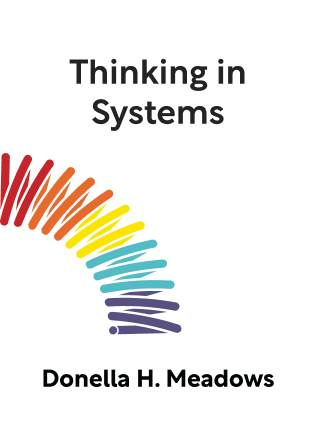

This article is an excerpt from the Shortform summary of "Thinking in Systems" by Donella H. Meadows. Shortform has the world's best summaries of books you should be reading.
Like this article? Sign up for a free trial here .
What is a complicated system? How does it work, and how is it different from other systems?
A complicated system is when a system is made up of multiple stocks, flows, feedback loops, and more. Most systems we recognize in our world are complicated systems.
Read more about complicated systems and how they work.
Building a Complicated System
In reality, systems are very complex. There are many, many complicated systems, even though both simple and complex systems in the world.
- A single stock may not just have an inflow and outflow, but really have multiple flows in and out, as well as multiple balancing and reinforcing loops working in opposite directions.
- A single flow may affect dozens of stocks.
- Feedback loops affect each other, reinforcing each other or balancing each other.
For example, the world population has an inflow representing birth rate, but birth rate is influenced by a vast number of inputs, such as the overall economy, healthcare, and politics, which are themselves complicated systems.
We’ll take what we’ve learned and build up to more complicated systems, which are simplistic models of real-world systems. The author calls this collection of systems a “zoo,” which is an appropriate metaphor. Like in a zoo, these animals are removed from their natural complex ecosystem and put in an artificially simplistic environment for observation. But they give a hint of patterns in the real world and yield surprisingly insightful lessons in both simple and complex systems.
Fixing Oscillations
Oscillations can cause more problems, especially in complicated systems.
How do you fix this? One intuitive reaction is to see the delays as bad. Surely, shortening the reaction time should solve the problem! The car manager decides to shorten her perception delay, reacting to two days’ data instead of three, and shortening her response delay, ordering the entire shortfall in one go, rather than spacing it out.
This actually makes things worse. The oscillations increase dramatically:
(Shortform note: this graph is an approximation to illustrate the point. System analysts build quantitative models to produce more accurate charts.)
In essence, shorter delays cause larger overreactions—at the car lot’s lowest points, the manager places large orders multiple times in succession. This causes a huge buildup of cars, which takes a long time to draw down. The cycle repeats in complex systems.
Counter-intuitively, the better reaction to oscillations is actually to slow reaction time. Oscillations are a sign of overreacting. The manager should under-react—if she increased her delays from 3 days to 6 days, the oscillations would dampen quite a lot:
The Importance of Delays
As you’ve seen, delays affect systems a lot, in somewhat unpredictable ways. That’s why systems thinkers are obsessed with identifying delays and studying their impact in simple and complex systems.
This example just represents a single simple car lot. Imagine things like this happening throughout the broader economy, in hundreds of thousands of places, all interconnected. All the car lots around the world are connected to the manufacturer, which is connected to the parts makers, who are connected to suppliers of steel, rubber, electronics. Every single member here has its own idiosyncratic delays and oscillations—imagine the coordination it takes to produce new cars and ship them nationwide!

———End of Preview———
Like what you just read? Read the rest of the world's best summary of Donella H. Meadows's "Thinking in Systems" at Shortform .
Here's what you'll find in our full Thinking in Systems summary :
- How the world, from bathtub faucets to fish populations, can be seen as simple systems
- The key system traps that hold back progress, such as escalating arms races and policy addiction
- Why seeing the world as systems can give you superpowers in work and life






